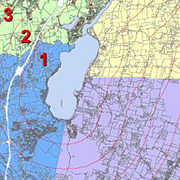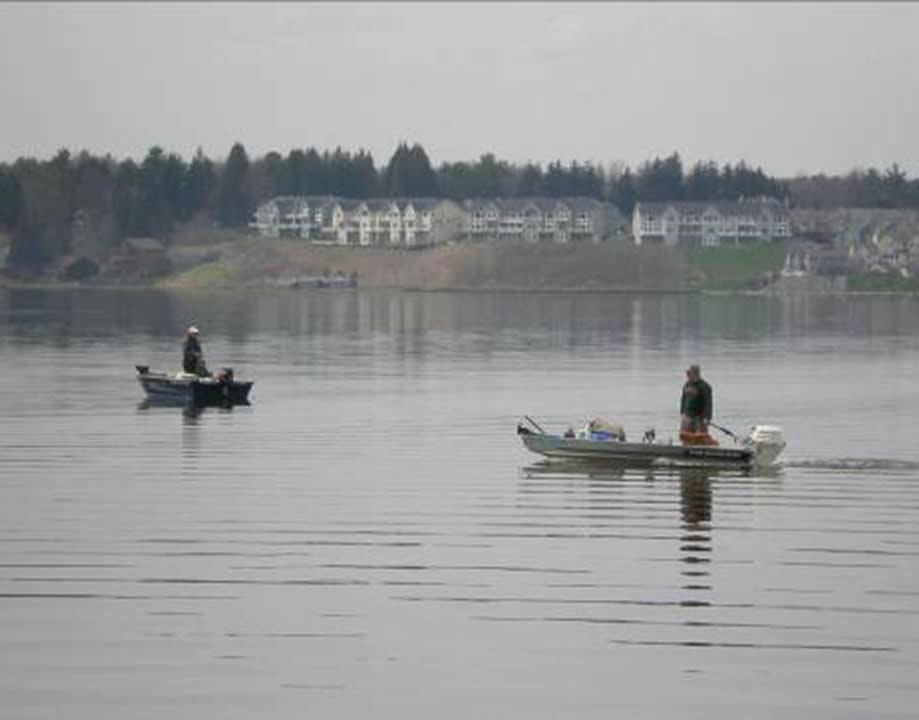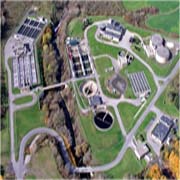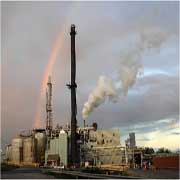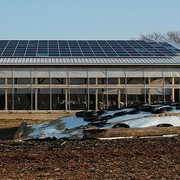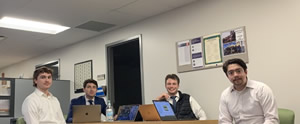By Theme:Arts and Literature | Campus Sustainability | Community Perspectives | Development | Economic Analysis | Ecosystem Analysis | Education | Energy | Environmental Justice | Food Systems | Geology of the Watershed | Green Architecture | Green Business | History of the Watershed | Invasive Species | Land Use Patterns | Public Policy | Recreation | Transportation | Water Quality
Economic Analysis
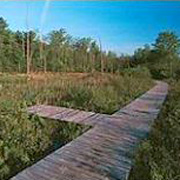 An Analysis of the Kayaderosseras Creek as an Economic Resource
An Analysis of the Kayaderosseras Creek as an Economic Resource
Becky DiSciacca and Lexie Reiss (2005)
In this study, we have adopted an economic perspective to better understand the relationship between human activity and the natural ecosystem resources in the Kayaderasseras Creek watershed. A general overview of the economic benefits of ecosystem services in addition to a more specific focus on several ecosystem functions, namely aesthetics as well as tourism and recreation, help form a basis for understanding larger economic trends in this natural boundary area.
Full report is not available. Please contact Karen Kellogg for more information.
Caroline Bergelin and Jennifer Marks (2006)
We used a survey to examine Saratoga Springs residents' views of proposals to develop new municipal water sources. Analysis of survey data show that recreational activities, household economics levels, and varying distances from Saratoga Lake influence how individuals value Saratoga Lake as a key aspect of environmental and social sustainability.
Elizabeth Brier-Rosenfield and Elizabeth King (2006)
Jonathan Clarke and Peter Suneson (2007)
Much of the speculation about the use of Saratoga Lake as a drinking source has focused on its potential impact on businesses dependent on recreational activities on the lake. We surveyed owners of businesses on Saratoga Lake to derive the economic impact of recreation. We also conducted open ended interviews of business owners to ascertain what they viewed as long term threats to the vitality of the lake.
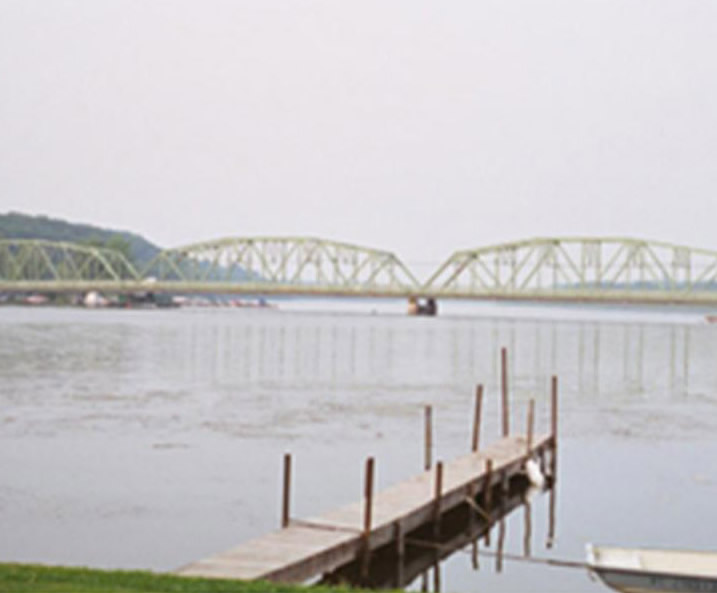 The Impact of Pricing Reform on Water Consumption in Saratoga Springs
The Impact of Pricing Reform on Water Consumption in Saratoga Springs
Jonathan Greene and Ben Krasnick (2007)
Economists contend underpricing of scarce natural resources, like water, leads to overconsumption. This study explores how the shift in water pricing has affected residential water consumption in Saratoga Springs using household level data from 2003-2007.
Full report is not available. Please contact Bob Turner for more information.
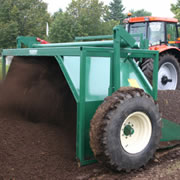 Composting at Skidmore: Turning our Waste into a Resource
Composting at Skidmore: Turning our Waste into a Resource
Will Coffey and Nadine Dodge (2010)
Skidmore College produces a substantial amount of organic waste in the form of food scraps, horse manure, and lawn maintenance byproducts that present both economic and environmental concerns to the College. We conducted a comprehensive study to ascertain how these wastes can be turned into a valuable economic and environmental resource through composting. After completing a study of composting at peer institutions, analyzing available composting technologies, and conducting a cost-benefit analysis, we determined that a windrow composting system will be the most cost-effective waste management system for Skidmore. The final result of our project is a detailed proposal that outlines how such a system can be implemented.
"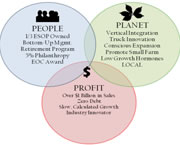 We Are Closer to You": Stewart's Shops and Corporate Social Responsibility
We Are Closer to You": Stewart's Shops and Corporate Social Responsibility
Harrison Shulman and Jim Turley (2010)
We studied the workings of Stewart's Shops to determine the practices that have enabled
them to be successful in business while maintaining a positive relationship with the
communities in which they operate stores as well as a low environmental impact. We
have discovered that Corporate Social Responsibility does not have to be driven by
a desire to strictly avoid risk, develop a marketing strategy or target a niche market.
In the case of Stewart's Shops, Corporate Social Responsibility has been the result
of their desire to make money and stay in business one hundred years from now.
Full report is not available. Please contact Karen Kellogg for more information.
Laura Adelman and Davide Gill-Austern (2011)
We conducted a conceptual analysis of a potential anaerobic digestion installation
at the Saratoga County wastewater treatment plant as a waste to energy solution. We
concluded that an anaerobic digester would prove beneficial to the plant based on
long term environmental, social, and economic benefits.
Michael Jennings and Doug Yeates (2011)
Why is Finch Pruyn, one of the largest remaining paper companies in the Adirondacks,
seeking to reduce their carbon and wastewater emissions as well as manage their forest
lands more sustainably? We examine the impact of outside stakeholders in making environmental
considerations an important component of Finch’s long term competitive strategy.
Rachel Chalat and Leandra Cooper (2012)
We examined the technological and financial feasibility of a solar installation for the Williamson Sports Center and the Van Lennep Riding Center at Skidmore College. The technological portion of this study evaluates practical installation considerations for each site, and the financial portion provides monetary incentives and options. Ultimately, our study provides possible opportunities to help Skidmore continue to reduce its greenhouse gas emissions.
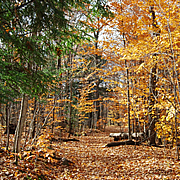 The Gift That Keeps on Giving: Skidmore College's New Land
The Gift That Keeps on Giving: Skidmore College's New Land
Eva Fillion, Jackie Slocombe, and Roz Freeman (2012)
Skidmore College recently received a gift of 200 acres of forest just north of the College’s riding stables. We investigated the educational and recreational value of the new land, estimated the carbon sequestration capacity of the forest within the context of the greenhouse emissions by the College, and explored whether other peer colleges have comparable forests (and, if so, how they use them). We offer recommendations to balance effective use and preservation.
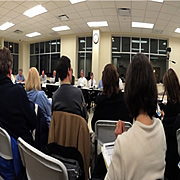 Economic Growth, Politics, and Comprehensive Planning
Economic Growth, Politics, and Comprehensive Planning
Josh Inaba, Katherine Rosman, and Leslie Velasquez (2014)
Saratoga Springs is challenged with planning for future development that balances growth and conservation of natural resources. We conducted a historical and qualitative analysis of the city’s comprehensive plans over the last 50 years and interviewed various stakeholders, and studied how the theory of sustainable development has been implemented. Despite conflicts between competing interests, the outcome of comprehensive plans and the work of local politicians have balanced economic, sustainability, and social goals.
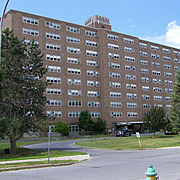 Barriers to Affordable Housing and Sustainable Solutions: A Case Study of Saratoga
Springs, New York
Barriers to Affordable Housing and Sustainable Solutions: A Case Study of Saratoga
Springs, New York
Lauren Bosche, Emily Durante, and Margaret Patterson (2015)
The purpose of this research is to contextualize Saratoga Springs as a case study
for finding sustainable solutions to housing problems commonly faced by cities that
undergo urban renewal. Using archival research, we investigated the specific challenges
that Saratoga Springs faces. Through interviews we gained an understanding of the
obstacles that affect access to and development of affordable housing programs in
the Saratoga Springs region.
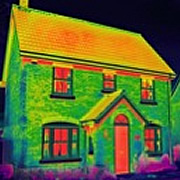 Retrofitting Homes for Energy Efficiency for Low Income People: A Case Study of Saratoga
County
Retrofitting Homes for Energy Efficiency for Low Income People: A Case Study of Saratoga
County
Amy Weaver, Melissa Chilinski, and Spencer Nelson (2015)
We analyzed the effectiveness of low-income weatherization in Saratoga County, NY. Based on a comprehensive examination of literature on weatherization programs at a global and national level, funding appears to be the greatest barrier for low-income weatherization programs. We suggest allocating more funding to programs that focus on a streamlined approach to weatherizing mobile homes as a way to maximize funding and houses weatherized.
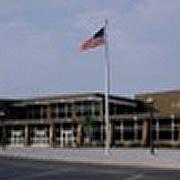 Incentives and Barriers for Implementing Solar Energy Technology in Schools in Saratoga
Springs, NY
Incentives and Barriers for Implementing Solar Energy Technology in Schools in Saratoga
Springs, NY
Osheen Srinivas (2015)
In New York, there are many state tax incentives to use solar energy. This research
works to better understand the incentives, barriers, and power of decision-making
in the Saratoga Springs, NY school district. The Saratoga Springs School District
is not yet ready to implement solar technology due to barriers such as lack of comprehensible
information from the initiative to users, and the upfront costs of installation.
Report is not available. Please contact Karen Kellogg for more information.
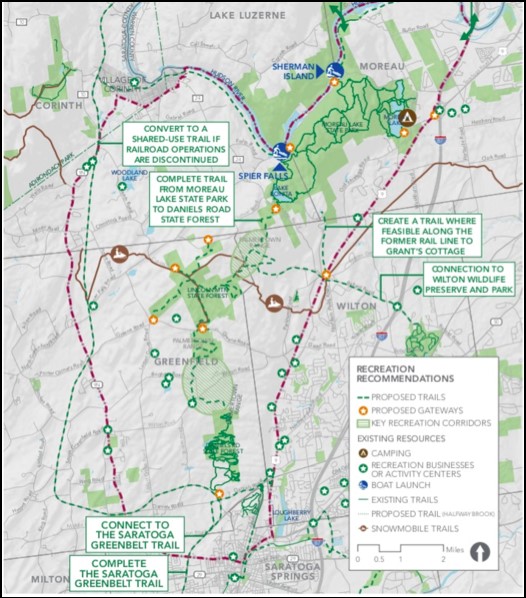 Laying Trail Down to Palmertown: Using the Travel Cost Method and Contingent Value
Method to Evaluate the Value of a Palmertown Range Recreational Trail in Saratoga
County, NY
Laying Trail Down to Palmertown: Using the Travel Cost Method and Contingent Value
Method to Evaluate the Value of a Palmertown Range Recreational Trail in Saratoga
County, NY
Lily Esposito, Abby Grayburn, Alana Pogostin (2020)
We examined the monetary value of an expanded trail system, and the extent to which the proposed Palmertown Range Trail offers an opportunity to improve local business revenues, protect natural resources, and promote sustainable development. Saratoga County residents support the Palmertown Trail for several reasons, particularly growth in business revenues through increased tourist visits. Saratoga County residents would be willing to pay $18.83 – $19.85 annually for a trail connecting the Saratoga Greenbelt Trail to Moreau Lake State Park.
Ben Burns, Teddy Heroux, Jack Lipson & JC Mueller (2021)
This project sought to measure the adoption of residential energy efficiency in Saratoga County. Data was collected through eleven interviews with local stakeholders and over five hundred survey responses. We found significant disparities in adoption and engagement of energy efficiency between locations and income groups in Saratoga County. We propose state-funded programs to increase community education and outreach to maximize the residential energy efficiency in Saratoga County.
